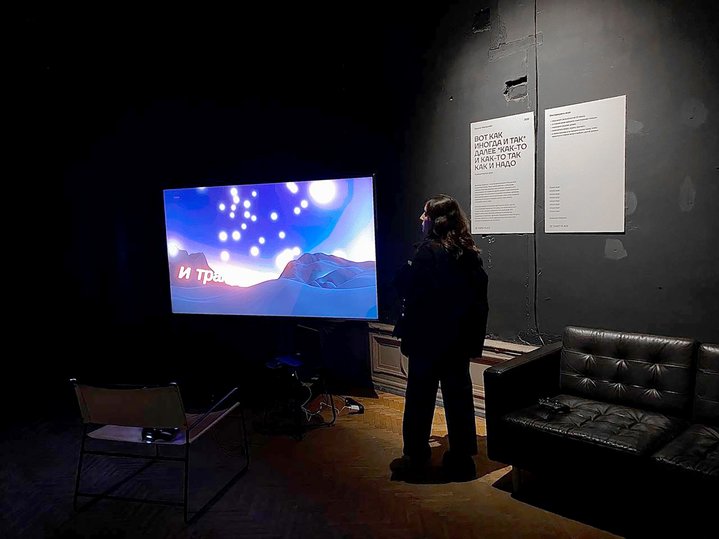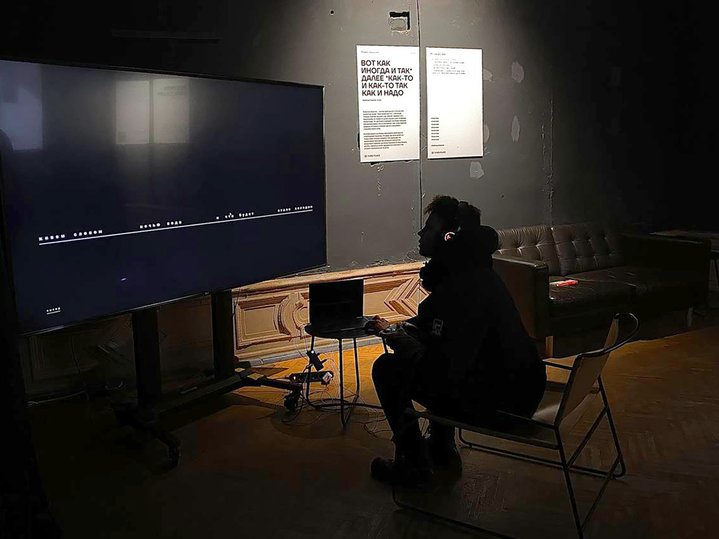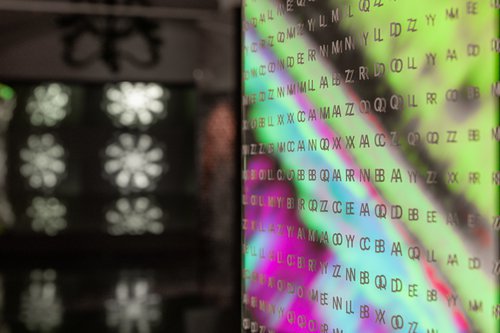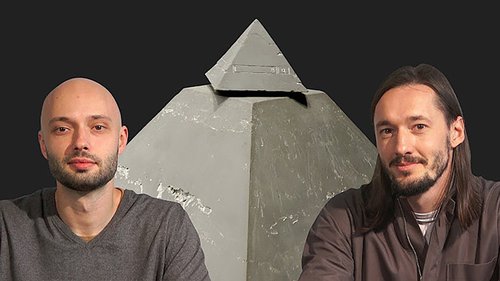Psychotherapist for AI, exhibition view at Third Place, 2023. Courtesy of Third Place press office
Russian artists are collaborating with Artifical Intelligence
The Third Place, an independent art centre in St. Petersburg is currently hosting an exhibition called Psychotherapist for Artificial Intelligence.
While Midjourney and other neural-network-based tools for creating images have recently caused controversy in the art world, more artists and writers are treating AI as their partner, not the enemy, and use it as a tool. Moscow Conceptualist artist Pavel Pepperstein (b.1966) has co-written a book of fiction called ‘Trying to Wake Up’ with a neural network. The collection contains twenty-four stories, half of them written by the author himself, and the other half generated on the basis of Pepperstein's works and interviews, and texts of classical literature.
Among Russian artists working with AI is Yegor Kraft (b. 1986). In the project ‘Content Aware Studies’, presented at the Anna Nova Gallery in St.Petersburg, he used machine learning and artificial intelligence technologies to try to reconstruct the loss of ancient sculpture, as well as generate ‘antique’ works that did not exist before.
::vtol::, or Dmitry Morozov (b. 1984), makes complex robotic devices that produce poetic work. For example, in the multimedia installation ‘Low Pressure Calculations’, on view at the State Hermitage Museum, he uses contactless RFID technology, fans, automatic doors and a thermal printer to create what can be described as wind music. All the elements are controlled by an algorithm that has to keep track of repetitive and established sequences to avoid them and make the sound as natural as possible.
Between 2018 and 2021 the Hermitage staged several exhibitions dedicated to artificial intelligence and digital art. Over the past two years, this tradition has not been maintained, and alternative venues, galleries and cultural spaces, are helping to fill the gap. One of the notable recent examples is Psychotherapist for AI (until February 26), a show put together by curators Anastasia Garnova and Il Gurn at the Third Place, one of St.Petersburg’s independent venues.
The exhibition space is located in the Lopukhin-Naryshkin mansion, an historicist building with lots of stucco, preserved fireplaces, an impressive grand staircase, mosaics on the floor, columns, and carved doors. At various times it was home to Prince Lopukhin, the philanthropist Naryshkin, the infamous statesman Pobedonostsev, the Red Railwayman club, the train drivers' school and later the squat (hence the graffiti and tagging on the walls). The building is now in the process of restoration.
The Third Place specialises in digital art, NFTs and modern technologies. ‘Artificial Intelligence’, includes other forms of contemporary art such as video art, mixed media installations, digital works, computer games, sculpture, and mechanical objects. One AI project is ‘Pandemic Chronotope, the Tale of the Firebird’ by artist Maria Fedorova (b. 1989). Her installation, based on fairy tales that once inspired Pushkin as well as many Russian classical painters, is in effect a zootrope, a device for displaying moving images that anticipated cinematography and animation. You rotate the disks and look through a slot at the shifting images. The image of the Firebird gradually flaps its wings and Ivan Tsarevich, another fairytale character, begins to ride a cyborg wolf.
The project merges old-school technology with cutting-edge AI solutions. The characters are created by a neural network which was preloaded with stories and fairy tales sent by participants of the experiment during the pandemic summer of 2020. The output was a single collective tale, a magical digital world, a project website, a video, an interactive installation, and several objects.
Another work which makes use of artificial intelligence is ‘Digital Atlants’ by Artem Moroz (b. 1996). The artist wittily uses the hall of a mansion, where two columns have collapsed and are in a ruined state (at one point this place was a cinema). With the help of generative algorithms, images of visitors appear online, growing to the size of antique titans and ‘supporting’ the arch vault instead of the columns.
Daniel Zuev (b. 2001) in the project ‘A sensual confession to loneliness, or light in any darkness!’ uses neural networks to visualise stories sent in by respondents. The project is still ongoing, you can send the bot on Telegram your emotions and associations with the word’loneliness’, and receive an image in response. The work consists of two screens – on the left is a rendering of the text created by artificial intelligence, on the right, it is created by the artist himself.
Works in other genres include ‘that is how something and so* on *somehow and somehow as it should’ by Polina Chernysheva (b. 1999). She has created a video game based on the poems of the conceptualist poet Vsevolod Nekrasov. It is a journey with cosmic landscapes, where there are no opponents, no obstacles, no definite goal. You can wander slowly through the poetic text, experiencing a sense of vertigo, and the joy of exploration. One can be confronted by fiery flashes and burning words. The mood and atmosphere of the place the player enters is conditioned by the poetics of the chosen poem. For example, inside the locus ‘and what will be’ is dark, foggy, the letters are scattered, dispersed, in a suspended state. In the space ‘water at night’, the looped poetic line becomes a glowing digital river in the night landscape. The artist herself says of the project: "It was a very interesting experience for me to combine texts, letters, poetry, a kind of drama with a technological medium. It was an opportunity for me to create a kind of atmosphere and situation, like in a theatre, in order to fully immerse myself in the works and meanings of the author."
The idea to use the poems of Vsevolod Nekrasov seems justified, because the task of the poet was to make the word concrete and tangible. In Chernysheva's project the soaring and hovering words become objects. Nevertheless, Vsevolod Nekrasov, born in 1934, is not a modern poet, but rather a representative of the second avant-garde. In the future it would be very promising and interesting to use poems by living poets, for instance those like Andrey Cherkasov and Yegor Zaitsev who have followed in Nekrasov’s footsteps.















